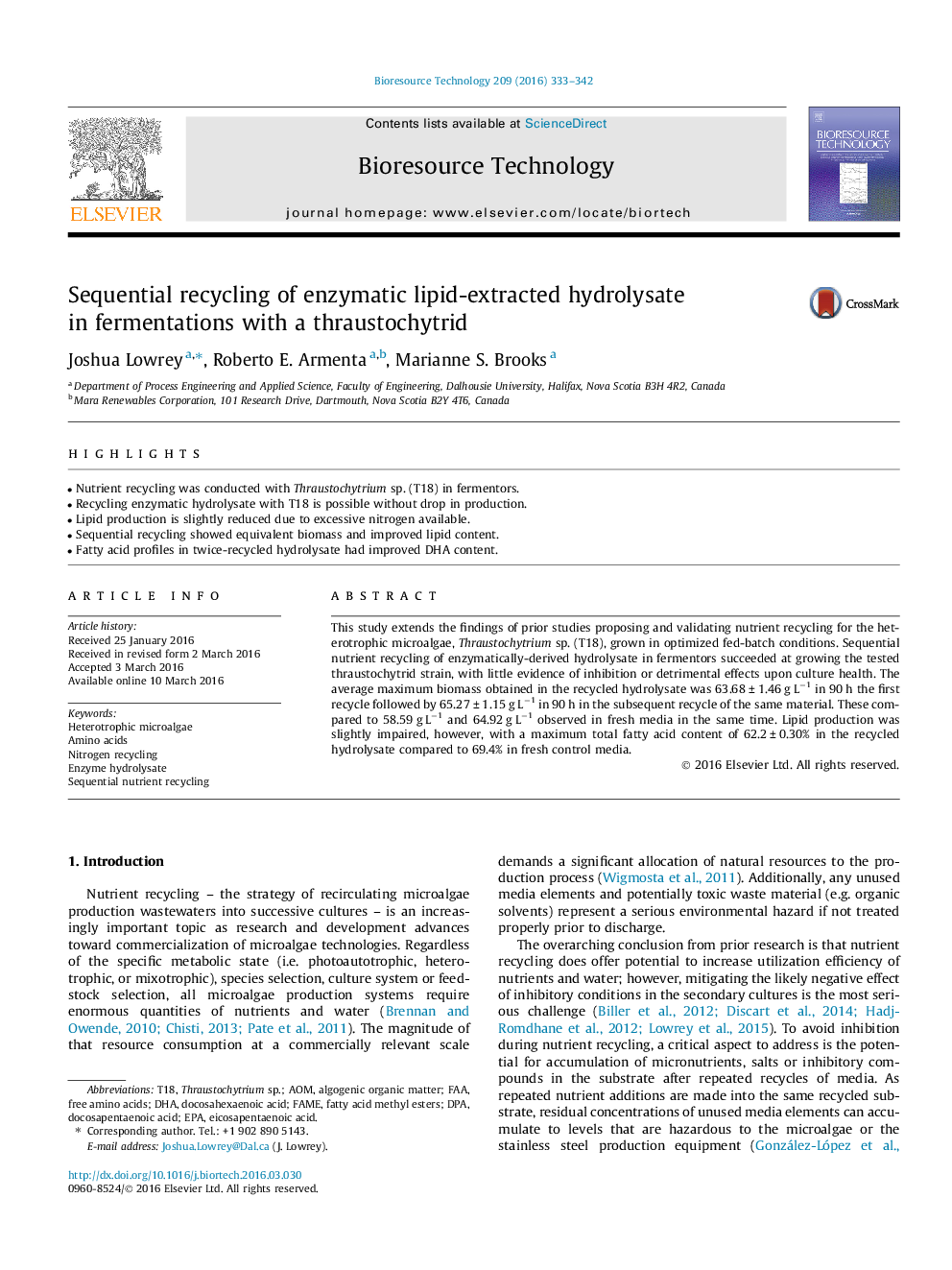| Article ID | Journal | Published Year | Pages | File Type |
|---|---|---|---|---|
| 679200 | Bioresource Technology | 2016 | 10 Pages |
•Nutrient recycling was conducted with Thraustochytrium sp. (T18) in fermentors.•Recycling enzymatic hydrolysate with T18 is possible without drop in production.•Lipid production is slightly reduced due to excessive nitrogen available.•Sequential recycling showed equivalent biomass and improved lipid content.•Fatty acid profiles in twice-recycled hydrolysate had improved DHA content.
This study extends the findings of prior studies proposing and validating nutrient recycling for the heterotrophic microalgae, Thraustochytrium sp. (T18), grown in optimized fed-batch conditions. Sequential nutrient recycling of enzymatically-derived hydrolysate in fermentors succeeded at growing the tested thraustochytrid strain, with little evidence of inhibition or detrimental effects upon culture health. The average maximum biomass obtained in the recycled hydrolysate was 63.68 ± 1.46 g L−1 in 90 h the first recycle followed by 65.27 ± 1.15 g L−1 in 90 h in the subsequent recycle of the same material. These compared to 58.59 g L−1 and 64.92 g L−1 observed in fresh media in the same time. Lipid production was slightly impaired, however, with a maximum total fatty acid content of 62.2 ± 0.30% in the recycled hydrolysate compared to 69.4% in fresh control media.
